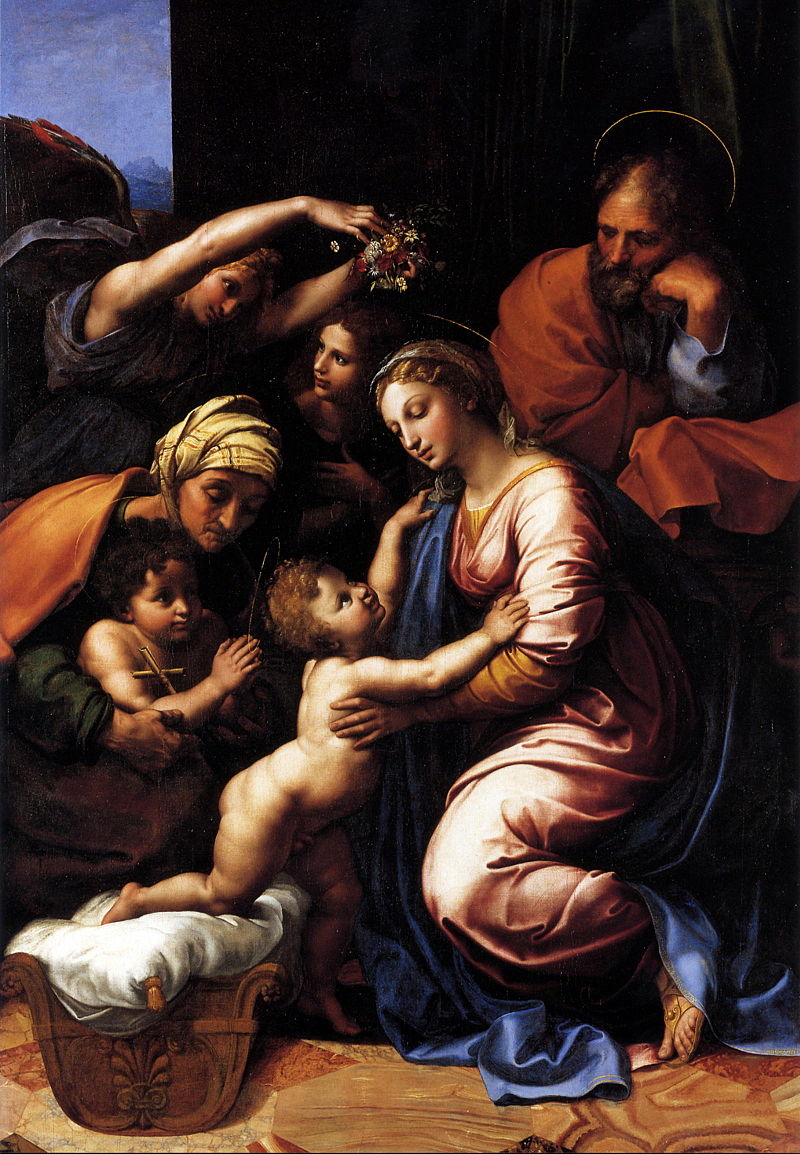By: Amy Fredrickson
During March of 1518, Raphael was working on two paintings commissioned by Pope Leo X, The Holy Family of Francis I and Saint Michael Vanquishing Satan, and both works are displayed today in the Louvre. Letters between Baldassarre Turini in Rome and Goro Gheri in Florence illustrate Raphael’s progress while creating these works.
On 24 March 1518, written in a letter to Gheri, Turini commented on Raphael’s unusual treatment of the figures, in both paintings, but especially in his depiction of the Holy Family configuration.
The works were commissioned as gifts for France against the background of the political alliance between Leo X and King Francis I. The marriage of the Pope’s nephew Lorenzo II de’ Medici to the King’s cousin, Madeleine de la Tour d’Auvergne, was an occasion to celebrate and commission new paintings. Raphael began the compositions in 1517, and sent the completed works to France in the spring of 1518.
The Holy Family includes Saint Elizabeth, the Baptist child, and two angels. It was a gift for Claude, Francis I’s wife. While it is signed RAPHAEL URBINAS, it is plausible that workshop assistants completed most of the painting. Raphael’s inclusion of an angel scattering flowers is based on a design for the Marriage of Cupid and Psyche at the Villa Farnesina. Raphael was most likely referring to the birth of the Dauphin at Amboise on 25 February. The news of his birth arrived in Rome on March 7th, and Duke Lorenzo de’ Medici left Florence to represent Pope Leo X at the Dauphin’s baptism on 26 april.
St. Michael Vanquishing Satan was intended for King Francis I. Raphael had previously approached the subject of Saint Michael in the early 1500s. The painting shows Raphael’s workshop’s influence, and the painting was met with some criticism from contemporaries in Rome due to its unusual coloring. Sebastiano del Piombo wrote to Michelangelo in July critiquing the painting’s smoky tinge. The colouring may be due to Giulio Romano’s overuse of black. Scholars agree that Romano was involved because the painting’s colours were uncommon in Raphael’s works. Unfortunately, the over-restoration has further distorted the original colours.
While it is clear that Raphael’s workshop was involved in these works, due to their prominent recipients Raphael would have also been instrumental to their their execution and prompt completion.
Raphael, Saint Michael Vanquishing Satan, 1518, Oil Transferred to Canvas from Panel, Louvre.
Raphael and Workshop, Holy Family of Francis I, 1518, Oil on Panel, Louvre.
References
Jürg Meyer Zur Capellen, Raphael a Critical Catalogue of his Paintings, Volume II: The Roman Religious Paintings, ca. 1508-1520, (Arcos, 2005), p. 29-30.
John Shearman, Raphael in Early Modern Sources: 1483-1602, (New Haven, 2003), p. 328.


